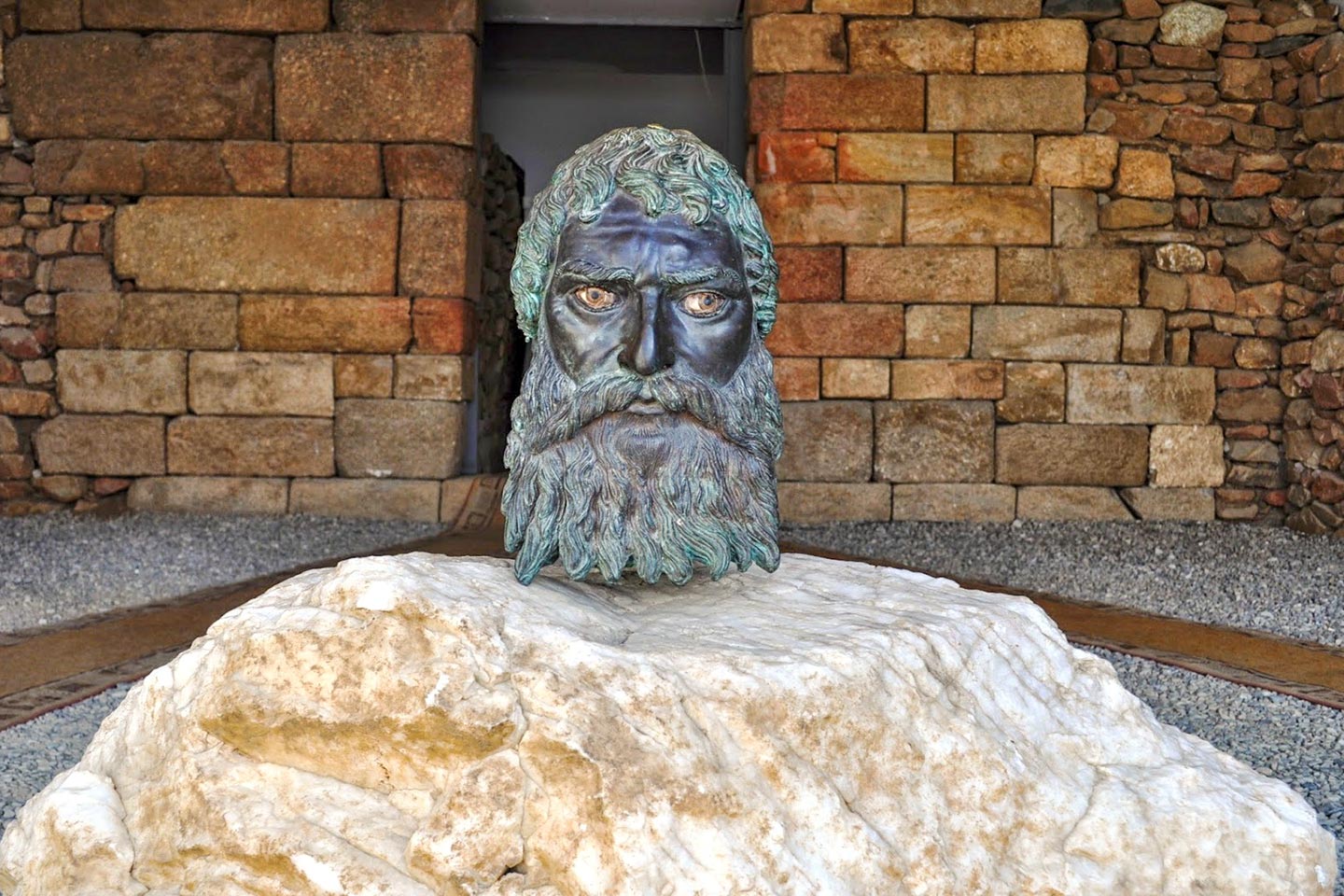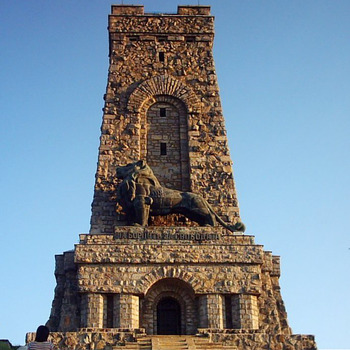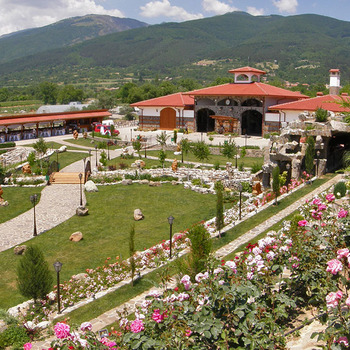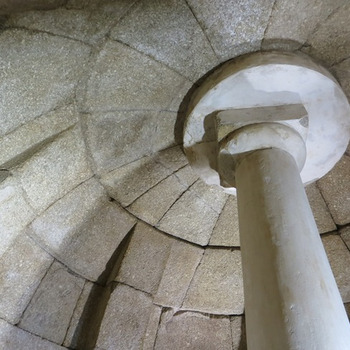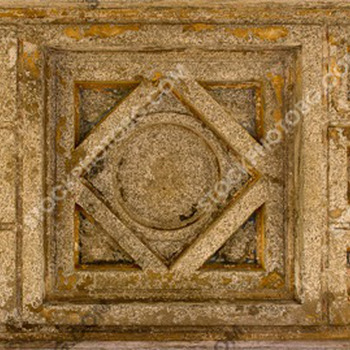Tomb of Seuthes III
Overview
The tomb of the Thracian king Sevt III is located in the mound Golyamata Kosmatka, 1 km south of the town of Shipka and 12 km north of the town of Kazanlak. It was opened in 2004. The tomb was built in the second half of the 5th century BC. The golden wreath of the ruler, a golden kiliks (wine glass), knee pads and a helmet, applications for horse ammunition, etc. were found in it, which are presented in the Historical Museum in the town of Kazanlak. The bronze head from the statue of Seuthes III, which is ritually buried in front of the facade, is remarkable, and it is quite detailed. It is an important testimony to the Thracian Orphic rituals. The tomb temple consists of a corridor, an entrance hall, a round chamber with a high dome and a rectangular chamber built as a sarcophagus of two monolithic stone blocks, one of which weighs over 60 tons. The three rooms are built of rectangular stone blocks and are covered with slabs. A double-leafed marble door closes the entrance to the round chamber. The upper fields of the wings are decorated with images of the god Dionysus, and in the east he is the personification of the sun, and in the west - of the earth and night. In the rectangular chamber are the ritual bed and a ritual table. They were covered with a cloth made of gold thread, after which a lavish burial of the ruler was performed. The name of Sevt is inscribed on the phial, the jug and the helmet, which proves that at the beginning of the 3rd century BC. here is buried Seuthes III - the famous Thracian ruler of the Odrysian kingdom. The capital of his kingdom, Seuthopolis, is located ten kilometers southwest of the tomb, at the bottom of Koprinka Dam. The head of the statue of Seuthes, which stood on a pedestal in the capital Seuthopolis, is buried in the tomb. The personal belongings and gifts necessary for the afterlife of the ruler are carefully placed in the chamber. At the funeral, the entrance to the round chamber and the vestibule was walled up, the ruler's horse was sacrificed, and the corridor was ritually burned. The tomb is part of the Valley of the Thracian Kings, which also includes the Kazanlak tomb, as well as the tombs and temples found in the mounds of Golyama Arsenalka, Shushmanets, Helvetia, Grifoni, Svetitsa and Ostrusha.
Recommended
- Art Gallery-Kazanlak
- Museum of History Kazanlak
- Monastery Introduction to the Mother of God
- Historical and ethnographic complex Kulatа
- House-museum of acad. Dechko Uzunov
- Kazanlak tomb


 Bulgarian
Bulgarian Romanian
Romanian